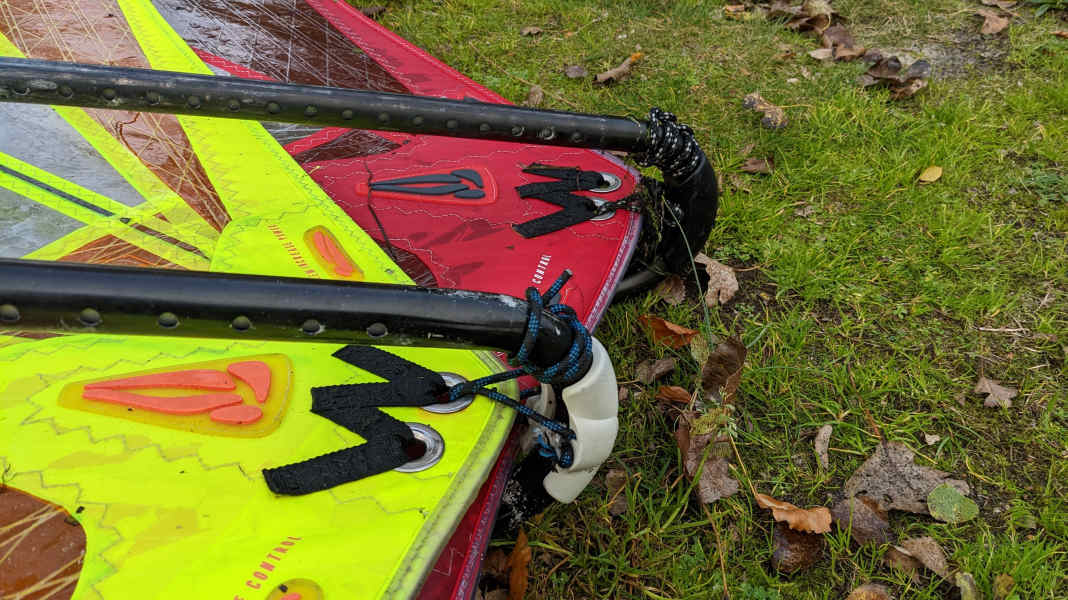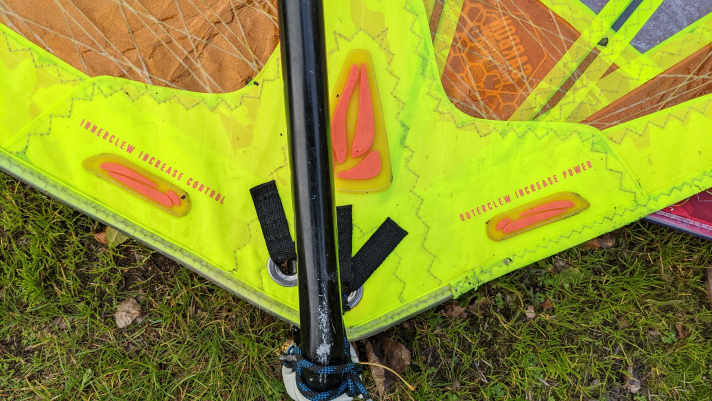
The mast has been threaded, the luff trimmed, the boom attached at the correct length and now the final step in rigging is to trim the clew. But many sails have two eyelets to choose from, which is the right one? Which eyelet you should use usually depends less on your height than on the wind conditions.
- In general, the idea is to keep the leech more closed by using the upper eyelet in order to generate more planing power and propulsion.
- Conversely, the use of the lower eyelet should allow the leech to twist more freely; in gusts, the top opens better and ensures better controllability.
In many cases, the lower eyelet is also offset a little further inwards to achieve the effect described above.
In our experience, the further apart the two eyelets are positioned, the greater the perceived differences. With Goya and Loftsails, for example, we have a clear difference between the two setups in the wave sail test. If the eyelets are closer together - as with the 2023 wave sails from Patrik, Naish or GA Sails - the difference is manageable.

However, the choice of which clew eyelet is used to rig the sail is not decisive for the overall trim. This is largely determined by the luff and clew tension.
